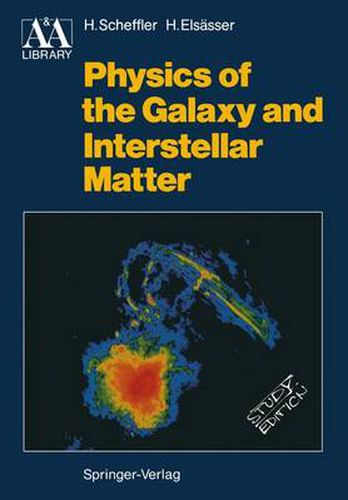Readings Newsletter
Become a Readings Member to make your shopping experience even easier.
Sign in or sign up for free!
You’re not far away from qualifying for FREE standard shipping within Australia
You’ve qualified for FREE standard shipping within Australia
The cart is loading…






This title is printed to order. This book may have been self-published. If so, we cannot guarantee the quality of the content. In the main most books will have gone through the editing process however some may not. We therefore suggest that you be aware of this before ordering this book. If in doubt check either the author or publisher’s details as we are unable to accept any returns unless they are faulty. Please contact us if you have any questions.
The present book is a translation of the original German edition (published in 1982) with some minor corrections and improvements. The guide to sup plementary and advanced literature given in the Appendix, however, has been brought up to date. This book is addressed primarily to students taking astronomy as a prin cipal or subsidiary subject, and to scientists of related fields, but amateur as tronomers should also be able to profit from it. For most chapters an elementary knowledge of mathematics and physics will be sufficient, however, Chaps. 5 and 6 impose somewhat greater requirements. In addition the reader should already be acquainted with the basic concepts of stellar physics as treated in introduc tory books, including the spectral types, the system of stellar magnitudes and colours, absolute magnitudes and luminosities, the Herlzsprung-Russell dia gram and its interpretation. A modem textbook should use SI units. On the other hand, the use of the cgs system is still the prevailing custom in astrophysics - together with the special units of astronomy: length is quoted in parsecs [pc], mass in solar masses [M0] and time in years [a]. We have therefore compromised and employed both cgs and SI units in this book, whichever was the appropriate choice in each instance. A table for conversion of cgs units into SI units and vice versa is given in the Appendix.
$9.00 standard shipping within Australia
FREE standard shipping within Australia for orders over $100.00
Express & International shipping calculated at checkout
This title is printed to order. This book may have been self-published. If so, we cannot guarantee the quality of the content. In the main most books will have gone through the editing process however some may not. We therefore suggest that you be aware of this before ordering this book. If in doubt check either the author or publisher’s details as we are unable to accept any returns unless they are faulty. Please contact us if you have any questions.
The present book is a translation of the original German edition (published in 1982) with some minor corrections and improvements. The guide to sup plementary and advanced literature given in the Appendix, however, has been brought up to date. This book is addressed primarily to students taking astronomy as a prin cipal or subsidiary subject, and to scientists of related fields, but amateur as tronomers should also be able to profit from it. For most chapters an elementary knowledge of mathematics and physics will be sufficient, however, Chaps. 5 and 6 impose somewhat greater requirements. In addition the reader should already be acquainted with the basic concepts of stellar physics as treated in introduc tory books, including the spectral types, the system of stellar magnitudes and colours, absolute magnitudes and luminosities, the Herlzsprung-Russell dia gram and its interpretation. A modem textbook should use SI units. On the other hand, the use of the cgs system is still the prevailing custom in astrophysics - together with the special units of astronomy: length is quoted in parsecs [pc], mass in solar masses [M0] and time in years [a]. We have therefore compromised and employed both cgs and SI units in this book, whichever was the appropriate choice in each instance. A table for conversion of cgs units into SI units and vice versa is given in the Appendix.